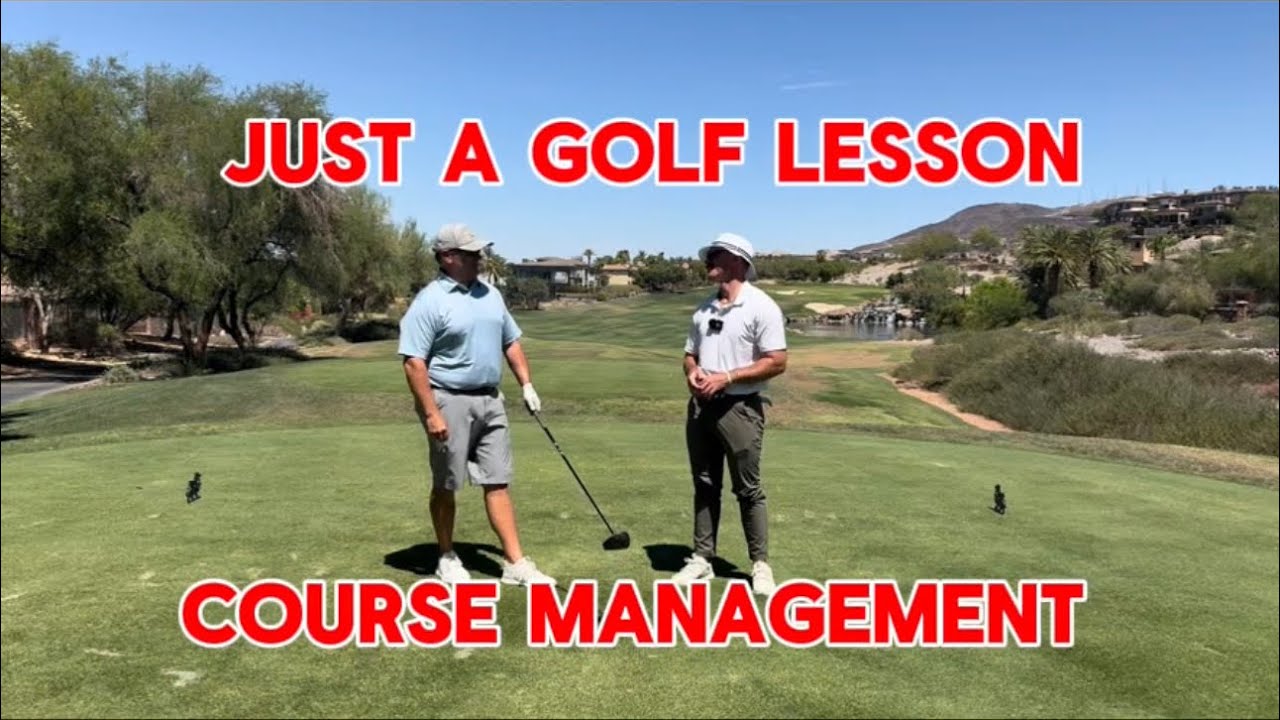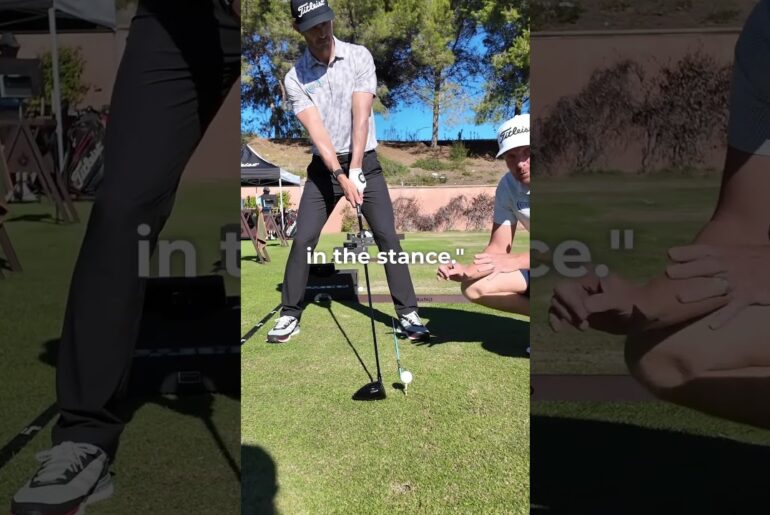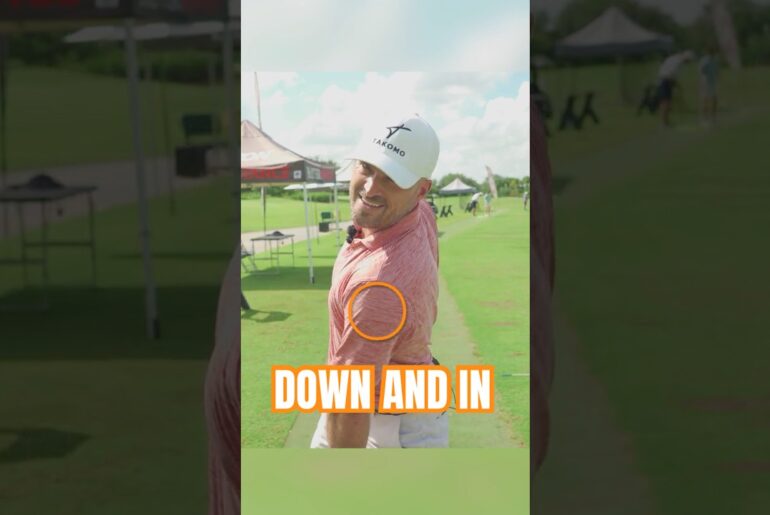In this video, we dive deep into on-course decision making and how smarter choices can directly lead to lower scores. We break down real-life scenarios, including club selection, risk vs. reward situations, course management strategies, and how to play to your strengths rather than your ego. whether it’s knowing when to lay up, aiming for the fat part of the green, or choosing a shot shat that fits your game, this video teaches you how to think your way around the course like a pro. If you’re serious about shaving strokes and making the leap to scratch golf, this is the mindset shift you need. Let’s get into it.
#golf #golfswing #golfer #golflife #golftips
Welcome back to Just Another Golf Lesson. Today we’re going to be going over some liveaction oncourse management training with Kyle here. Hi Kyle. Hi Brandon. What’s up? Not much. Cool. We’re starting here on the seventh hole out at Dragon Ridge. It’s a perfect hole to start on because when we were in the cart, he had a couple words to say. I think it was, “You hate this hole, don’t you?” It’s just hard. Okay. Well, we’re going to try to make it easier. So, we know that this hole is 380 yards uphill a little bit with a lake all along the right side. And what we can see right now is Kyle has a driver in his hand. Where does your driver normally go, Kyle? Different direction. Okay, perfect. So, if it’s 380 yards, what would be a reasonable number to have into the pit that you would be comfortable with? Under 140. So, we only need this golf ball to go 240. So, if I take this rangefinder, I’m going to let you do it. If we go to that cutout for the water, about halfway where the fairway is still nice and thick, what number is that? 241. Okay, perfect. So, right where the fairway stops being its thickest part, gives you your 140 number or under. Does your driver go past 240? It does. So, does it sound like a good club to hit? No, does not. So, what club are we going to hit? We’re going to get a threewood. Perfect. Let’s grab a 3-wood. So, while he’s grabbing his 3-wood, the whole reason that we’re talking about that is to make this whole play as wide as possible. Our first goal is to just keep this T-ball in play. His driver’s fine. He hits it great, but it brings in the narrowest part of the fairway possible. Requires us to hit too good of a shot. Pop quiz time. Why are we teeing up on the right side of the box? Because that’s where the trouble is. Trouble right. Now we can point away from it. So your 3-wood comfortably goes 230 to 240. You do not need to step on this very much at all. I want you to pick the smallest target that you can somewhere down the left center. Normal easy swing. Perfect. Right up the left center. Way to go. So, today on Math is Fun. This makes no sense. He just hit his 3-wood 251 and we somehow have 190 yards in. So, either the cart was wrong or we were way wrong. Anywh who, at least we’re really far away from that water still in the thick part of the hole. So, we got 190 slightly uphill. What do you think it’s going to play? Little breeze in two. So, it’s probably 200 205. Cool. What did you scope? 193 to what? The flag. What’s the cover on the bunker? 18. 183. Okay. So now we know that we need the ball in the air for a minimum 183 uphill a little bit. We need the ball in the air minimum for let’s call it 195 uphill with a little breeze. What club’s probably 500. Let’s do it. I’m still very confused that we still have 190 yards in. But sometimes this stuff happens. Come on, baby. Zoom in on that. That’s like 20 feet. Woohoo. Better choices. So, camerawoman Casey, can you zoom in on Kyle’s ball back left? And then, just saying that’s my ball close there about 10 feet. But as we were walking up here, he said that it’s a little deep. And why is that? I felt like it was a little much for the four iron. Okay. So, stomping on a 4 iron with water short, bunker short, uphill, into the breeze. Is that generally a good idea? No, not at all. So, we’re going to take the 4050 footer that we’ve got, go through a pretty detailed reading process. Two putt, get out of here, make your par. On to the next. So, we’re going to go through the whole reading process. Might as well just leave the coin down there in case we end up moving it. We’re going to put the ball down first just so that we can see it because we do have kind of a long putt. So, your first general sense of the putt, what do you see here? Going uphill to start, finishing off downhill, probably pretty quick down there, and going right to left as it finishes for sure. Okay. So then we’re going to come over here to the side so that we can get the speed of the green. Now anybody who’s out there when you got a lag putt, you have to look from the side. So we’re going to split the putt in half over here quite some ways. Now we’ll squat down and read it and tell us what you see speedwise. Uphill, downhill, flat. I think it’s probably 90%. Thinking it’s going to read really quick as it gets towards the front of the green. Perfect. One last read. We’re going to go behind the pin just to see if what he saw originally is staying true from the low side. Now, if you have the time to go through this much of a read, you should be. If you don’t have that much time in the groups behind you, we’ll figure that out later. What you’re seeing Definitely about the same. Okay. So definitely that second half of the putt’s swinging. Yeah, for sure. We’re going to go back there, line it up, see what you get. Sit down there, sweetheart. Broke a little bit more. Was a little bit quicker. I pulled her pretty good, too. Oh. Well, don’t pull it. Pretty big pull. So, the good news is you missed the low side, right? Yep. What does that mean? Uphill putt coming back. Uphill putt coming back. And when it finishes on the low side, more times than not, that putt ends up being what? You’re right. Ends up being straight. So, if you continue to watch your first putt and see how it finishes, if when the ball finishes towards the low side of a cup, which it normally does, it’s going to show you that that putt’s straight. You know why? Gravity. John Mayer used to say it. Gravity. Now, get in. Get out of here for your park. Oh, that’s brutal. Power lift. Nice five. Nice six. All right, let that be a lesson. Take your time on the short putts. Okay, on to hole two of the oncourse course management stuff. We got hole eight out here at Dragon Ridge. It’s par five, relatively straight. There’s not much trouble up there. So, our main goal off the box is based off of your standard ball flight. We’re going to choose the side of the T- box and a target to fit that shape. So, what’s your standard flight? Uh, left to right for sure. Okay. Little baby cut. So, we’re going to favor the right side of the box. Driver’s okay, right? Driver’s totally fine. There’s no trouble out there. Every once in a while you get lucky, there’s no trouble. So you can just blast drive it. This is one of those holes. So he normally plays a little cut. We’re going to tee it up on the right side, point it down the left center. See what happens. Right down the tubes. Way to go, Kyle. Nice. We’re in the dead center of the fairway. Whoa. All right, we got 290 left to the pin. It’s uphill. It’s into the wind. And we got Bunker’s positioned perfectly where his 3-wood goes. So, guess what club we’re not hitting? 3-wood. Nice. Even though if you hit 3-wood perfect, it’s going to leave you a little wedge, it’s not really worth it to take on the risk. So, anything further than 70 80 yards, what would be your most comfortable number? 110. 110. Okay. So, we need a 190 shot to give you 110 left in because it’s uphill into the wind. We’re going to favor that 200 205 because if it does sneak a little bit closer, no big deal. So, give me a 205 number. 205 club. Now, could he hit 3-wood? Absolutely. Could he pull it off? Absolutely. Is it a really fast way to derail your round? Absolutely. Let’s keep it in play. How far do we got? 132. We would have 110, but we are in the left center fairway and the pins kind of mid right so longest angle possible. Anywh who 132 a little bit uphill still into the wind. What do you think it’s playing? 145. Where’s the pin? Back right. Did you check? No. Should you check? Yes. Let’s check. Pins in the center. Pins in the center. Perfect. So, when we add that extra yardage, we know that it’s not going to go long, is it? Correct. So, us pulling the club that goes 145. Pretty safe. Yeah, pretty safe. It’s going to finish on the green. It’s pretty safe. So, we’re going to hit a 145 shot. Let the uphill take care of the rest. If we can favor a couple feet left of that pin to stay in the middle of the green, that would be pretty cool. So, we’re not looking at the pin here. We’re finding a target that’s just left of it. 145. Trust the number. O, don’t do that. Very bad. Very, very not good. Very right. Now we got to get it up and down. All right. So, we missed the green pretty far, right? We’re down there. That’s okay. It’s not over yet. We’re going to go through a full process and get it up and down, aren’t we? Yes. Perfect. Where are we going to start? Uh, club selection. Wrong. Wrong. We’re going to check out the green first. How much green do we got to work with? Decent amount. 20 so feet. It’s pretty flat. Nothing too crazy, right? Agreed. Not breaking anywhere. Now, we’re going to check out the lie. If the lie is perfect and we can get a wedge on it, preferably we’re going to fly it on the surface because there’s less variables to deal with. If the lie is terrible, that’s where we’re going to run it through the fringe here. That’s a pretty good lie. Okay, so we’re slightly downgrain. It’s teed up almost like it’s on Joa. I would advise you to fly it onto the green wedge. Toss it up there. See what you get. Glad we brought five just in case. Five clubs. clubs. Honestly, for anybody out there, when you get to the green, if you’re off the green, bring multiple clubs, please. That way, you don’t have to go back to the cart. You always have an option. That’s it. Okay, we got a putt at it. About six feet for par. Y even on these short putts, the five to sixfooters, we’re still going through our process. Is this putt uphill or downhill? Downhill. All right. Pretty flat. Pretty flat. We’re going to change our answer to pretty flat. Left to right or right to left? Left or right? How much? About half a cup. Perfect. You’ve made your decision. Commit to it. If it goes in, awesome. If it doesn’t go in, bummer. Be confident in your decision. Decent roll. Make your par. What a par. Way to go. Yeah. All right, we’re on the last hole of the Encourse playing lessons. Hole nine here at Dragon Ridge Country Club. Kind of a tough hole. If you can see that bunker on the right. How far is it to carry? Because I know you scoped it. 230. Look at that. We’re learning. We know your driver is going to fly more than 230. So, we’re not too concerned about that. What’s the bunkers down the left side? Too far to scope. Too far to scope. What an answer. They’re they’re roughly 280 into the wind. That would be quite a poke. So, really that only trouble that we’re dealing with is that right bunker if we hit it really bad. We’re going to tee up on the right side to make sure that we can point away from it. What line are you going for to take out all that trouble? The right side of the far bumper. Perfect. Let’s do it. Now, hopefully the mic didn’t cut out, but the wind did pick up here. So, Kyle, now that the wind is picking up and it’s kind of holding, what’s one thing you’re going to change with your setup? I’m going to tee the ball a little lower. Love the answer. I love We’re getting so good at this. Oh, there is a big gust. All right. Long way from home. Yeah, we got a long ways in, but down the left side in play. In play is all we could ever ask for. If it’s in play, we’ve got a chance. Okay. So, we do have quite a ways in 220ish. 220. 220. Cover on the bunker is 199. Okay. So, that cover is your main concern if we are actually going for this. We don’t have the world’s best lie. Rough here is only about inch and a half, two inches, but it’s sitting down halfway. So, we’ve got to be honest with oursel. Can you get a 3-wood or a fivewood out of that lie more times than not? No. So, is it a reasonable risk to take on? No. Can we make par or up and down with a 50 or 60 yard wet shot? Yes. I love it. What do we got to do to get to 50 yards? Hit something 160 yards uphill into the wind. Let’s add 10 to 15. 180. Let’s hit a 180 shot. Unfortunately, it sucks sometimes laying up on par four. It’s what we got to do. Take the big number out. It’s perfect. Get that up there. 40 50 yards. Get up and down. 60. Okay. What number do we got? 60. Don’t really need to scope the cover. We’re going to go up there and check it out. See what’s around the pin. See where’s the best spot to leave the ball. Okay. So, if nobody’s behind you and you’ve got the time to work with, I highly recommend coming up here to look at the pin because what we just saw now that we’re up here, this pin’s kind of in a bowl, isn’t it? It is. So, we can throw a dart right at it. It’s not going to wiggle too much either direction. If anything, we’re going to favor slightly left where that shadow is. Yep. 60 yards. That looks nice. I go in. Might be in. It might be in. Should have a good looking par. Nice. Way you go, Kyle. So, let this be a lesson. We had a terrible lie. Too far to get it to the green comfortably. We chose to lay up to a yardage that he’s reasonably comfortable at. And now he’s got two feet for par. Sometimes laying up, it’s the better option. The other ball’s mine. I’m going to go make it three, though. He can have his fort. Make sure to like, comment, follow, subscribe for more. Click that notification bell down there in the corner. We’ll see you next time. Nice.








4 Comments
Love the instagram content. Looking forward to your YouTube channel content.
Love these longer form videos!
As Scrooge McDuck said (about golf), “Play smarter, not harder”. Keep ‘em coming!
In the putting/chipping analysis, what would you change if you had to speed it up due to groups being behind?